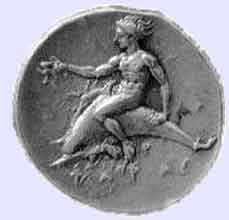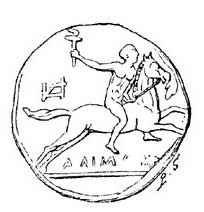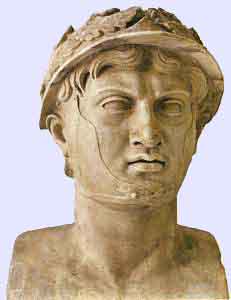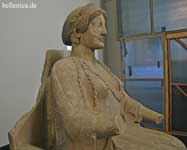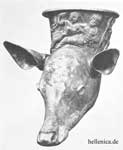.
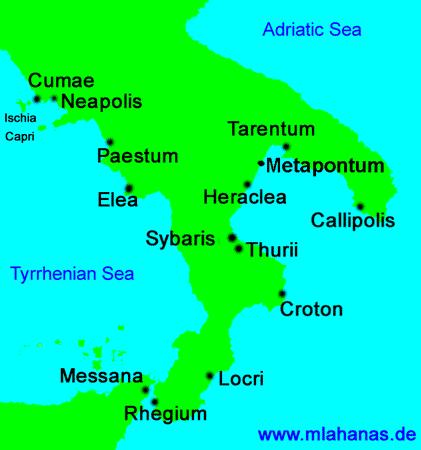
Taranto is today a coastal city in Apulia, southern Italy.. Its coordinates are 40°28′ N 17°14′ E. . Its altitude is 15 metres above sea level, with a surface area of 217 km². Taranto history dates back to the 8th century BC when it was founded as a Greek colony. The ancient city was situated on a peninsula, protected by a helm; the modern city has been built over the ancient Greek necropolis. The islets S. Pietro and S. Paolo (S. Peter and S. Paul) protect the bay (called Mar Grande, Big sea) where the commercial port is located. Another bay, called Mar Piccolo (Small sea), is formed by the old city, and there fishing is flourishing; Mar Piccolo is a military port with a strategic importance; at the end of the XIX century, a channel was excavated to allow the military ships to enter Mar Piccolo harbour, and the ancient Greek city become an island. In addition, the islets and the coast are strongly fortified. Because of the presence of these two bays, Taranto is also called “the city of the two seas”.
The Greek colonists called the city Taras, from the name of the mythical eponymous hero Taras, while the Romans, who connected the city to Rome with an extension of the Appian way, called it Tarentum.
Foundation and splendour
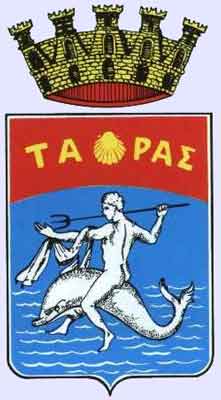
Emblem of the city of Taranto, with Taras riding a dolphin
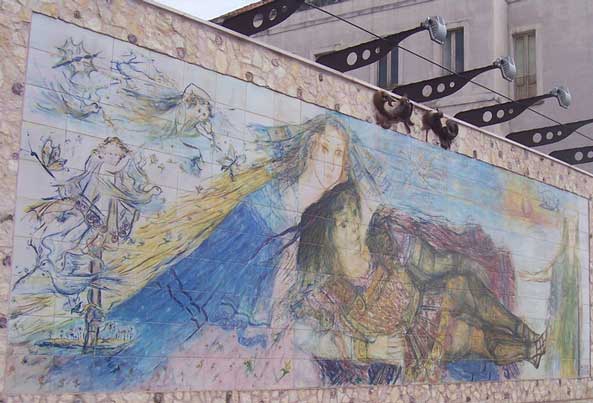
Phalantus and Aihra , Silvana Galeone; Centro Culturale Filonide, Taranto (Source)
Taranto was founded in 708 BC by Spartan immigrants. It is the only Spartan colony, and its origin is peculiar: the founders are partheniae, sons of Spartan women and perioeci (free men, but not citizens of Sparta); these unions were decided by the Spartans to increase the number of soldiers (only the citizens of Sparta could become soldiers) during the bloody Messenian wars, but later they were nullified, and the sons were forced to leave. Phalanthus, the partheninan leader, went to Delphi to consult the oracle: the puzzling answer designed the harbour of Taranto as the new home of the exiles. The partheniae arrived in Apulia, and founded the city, naming it Taras after the son of the Greek sea god, Poseidon, and of a local nymph, Satyrion. According to other sources, Heracles founded the city. Another tradition indicates Taras as the founder of the city; the symbol of the Greek city (as well as of the modern city) is Taras riding a dolphin. Taranto increased its power, becoming a commercial power and a sovereign city of Magna Graecia, ruling over the Greek colonies in southern Italy.
In its beginning, Taranto was a monarchy, probably modelled on the one ruling over Sparta. In 466 BC, Taranto was defeated by Iapyges, a native population of ancient Apulia, and the monarchy fell, with the inauguration of a democracy, and the expulsion of the Pythagoreans.
In 472 BC, Taranto signed an alliance with Rhegion, to counter the Messapi, Peucezi and Lucanians (all Italic populations), but the Tarantine and Reggian joint armies were defeated near Kailìa (modern Ceglie).
In 432 BC, after several years of war, Taranto signed a peace treaty with the Greek colony of Thurii; both cities contributed to the foundation of the colony of Heraclea, which rapidly fell under Taranto control.
In 367 BC Carthage and the Etruscans signed a pact to counter Taranto's power in southern Italy.
Under the rule of its greatest statesman, strategist and army commander-in-chief, the philosopher and mathematician Archytas, Taranto reached its peak power and wealth; it was the most important city of the Magna Graecia, the main commercial port of southern Italy, it produced and exported goods to and from motherland Greece, it had the biggest army and the largest fleet in southern Italy. However, with the death of Archytas in 347 BC, the city started a slow, but ineluctable decline; the first sign of the decreased power was its inability to field an army, since the Tarantines preferred to use their large wealth to hire mercenaries, rather than leave their lucrative trades.
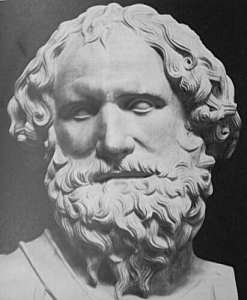
Archidamus III King of Sparta
In 343 BC Taranto appealed for aid against the barbarian to its mother city Sparta, in the face of aggression by the Bruttian League. In 342 BC, Archidamus III, king of Sparta, arrived in Italy with an army and a fleet to fight the Lucanians and their allies. In 338 BC, during the Battle of Manduria, the Spartan and Tarantine armies were defeated in front of the walls of Manduria (nowadays in province of Taranto), and Archidamus was killed.
In 333 BC, still troubled by its Italic neighbours, the Tarantine called the Epiriotic king Alexander Molossus to fight the Bruttii, Samnites, and Lucanians, but he was later (331 BC) defeated and killed in the battle of Pandosia (near Cosenza).
In 320 BC, a peace treaty was signed between Taranto and the Samnites.
In 304 BC, Taranto was attacked by the Lucanians, and asked for the help of Agathocles tyrant of Syracuse, king of Sicily. Agathocles arrived in southern Italy, took control of Brutium (the ancient Calabria), but was later called back in Syracuse.
In 303 BC-302 BC Cleonymus of Sparta established an alliance with Taranto against the Lucanians, and fought against them.
Wars against Rome
First contrasts
In the beginning of the 3rd century BC, Rome's increasing power started to frighten Taranto, especially for the mastery of the sea and the control over the Greek colonies in Magna Graecia. After the surrender of the Samnites in 290 BC, the Romans founded many colonies in Apulia and Lucania. Furthermore, some of the city-states in Magna Graecia, such as Rhegion, Croton and Locri, asked Rome for military help because of the wars that they were having with their neighbours; also Thurii, which was located on the Gulf of Taranto and under Tarantine rule, asked Rome for help in 282 BC, after having been attacked by Lucanians. This situation inevitably led to a conflict between Taranto and Rome, since Taranto felt Rome was interfering in the affairs of the Greek colonies in southern Italy, which the Tarantines considered under their dominion.
Two political parties were present at the time within Taranto. The democrats, led by Philocharis or Ainesias, were dominant; they were against Rome, because they knew that if the Romans entered Taranto, the Greeks would have lost their independence. The second faction in Taranto were the aristocrats, led by Agis; they had lost their power when Taranto had become a democracy, and did not oppose surrendering to Rome as it would increase their own influence on the city, by reducing the power of the democrats. However, the aristocrats did not want to surrender openly to Rome and become unpopular with the population.
At that time, Taranto had the most powerful naval forces in Italy, and hastened to come to an agreement with Rome that stated that Roman ships could not enter into the Gulf of Taranto.
In 282 BC, Rome sent a fleet carrying troops to garrison Thurii, but ten ships were caught by a tempest, and arrived in the sea in front of Taranto, during a holy day (the festival of Dionysus). The angered Tarantines, considering it a hostile act openly in conflict with the pact, which forbade the gulf of Taranto to Roman ships, responded by attacking the Roman fleet: the Tarantine navy sunk four Roman ships, and captured a fifth. According to some historians, Tarantine aristocrats had been asked by the Roman commanders Publius Cornelius and Lucius Valerius to arrest and execute the democrats and their followers, which would allow the aristocrats to lead the city, and sign an alliance with Rome.
Pyrrhic wars
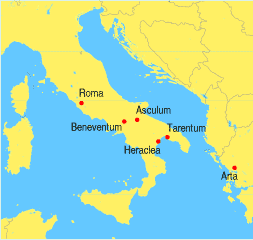 Most important places in the Pyrrhic War |
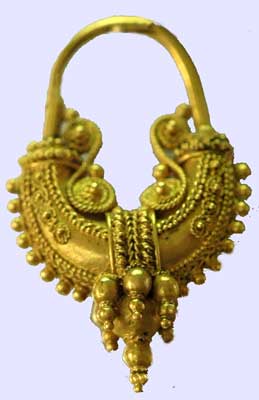
Cabinet des Médailles, BNF, Paris, France, Gold earring with filigrane decoration. Taras, third quarter of the 4th century BC.
Credit line De Luynes bequest, 1862 , Accession number Luynes 480
The Tarantines decided to call for help from Pyrrus, king of Epirus. The army and fleet of Taranto moved to Thurii and helped the democrats there exile the aristocrats. The Roman garrison placed in Thurii withdrew.
Romans sent diplomats to Taranto, but the talks were broken off by the Tarentines: the Roman ambassador, Postumius, was insulted and mocked by Philonides, a member of the popular party. In 281 BC, Roman legions, under the command of Emilius Barbula, entered Taranto and plundered it. Taranto, with Samnite and Sallentinian reinforcements, then lost a battle against the Romans. After the battle, the Greeks chose Agis to sign a truce and begin diplomatic talks. These talks were also broken off when 3000 soldiers from Epirus under the command of Milon entered the town. The Roman consul withdrew and suffered losses from attacks by the Greek ships.
Pyrrhus decided to help Taranto because he was in debt to them - they had earlier helped him conquer the island of Corcyra. He also knew that he could count on help from the Samnites, Lucanians, Bruttians, and some Illyrian tribes. His ultimate goal was to conquer Macedonia, but did not have enough money to recruit soldiers. He planned to help Taranto, then go to Sicily and attack Carthage. After winning a war against Carthage and capturing south Italy, he would have enough money to organise a strong army and capture Macedonia.
Before he left Epirus, he borrowed some phalanxes from the Macedonian king, and demanded ships and money from the Syrian king and from Antigonus II Gonatas of Antioch. The Egyptian king also promised to send 9000 soldiers and 50 war elephants. These forces had to defend Epirus while Pyrrhus was gone. He recruited soldiers in Greece as well, as the Greek cities wanted to avoid a war with Epirus, even though they were unconcerned with the Greek colonies in Italy. In the spring of 280 BC, Pyrrhus landed without losses in Italy. He had 20,000 phalanxes, 500 peltasts, 2,000 archers, 3,000 elite cavalry from Thessaly, and 20 war elephants.
After hearing of Pyrrhus' arrival in Italy, the Romans mobilized eight legions with auxiliaries, totalling about 80 000 soldiers, and divided into 4 armies. Valerius Levinus marched to Taranto, with an army of 30,000 legionnaires and auxiliaries. Pyrrhus moved from Taranto to meet its allies, but met with the Roman army, and decided to fight it next to Heraclea. The battle of Heraclea was won by Pyrrhus, but the casualties were very high. Upon his arrival in Italy, Pyrrhus thought that the Roman army would have been easily defeated by his Macedonian phalanx. However, Roman legions proved to be stronger than expected. Furthermore, Rome was able to raise a large number of legions, while Pyrrhus was far from home, and had only a handful of veterans with him.
Pyrrhus moved towards Rome, with the intention of rallying the peoples ruled by the Romans and conquering the city, but he had no success in this, and was forced to return to Apulia.
In 279 BC, Pyrrhus defeated another Roman army in the battle of Asculum (modern Ascoli Satriano, Foggia), again with many casualties. Most of the men Pyrrhus had brought over from Epirus were disabled or dead, including nearly all of his officers and friends. Recruiting would be impossible, and his allies were unreliable. The Romans, on the other hand, quickly replaced their losses with fresh men, and with every defeat, the Romans were becoming more determined to win. At the same time, Pyrrhus received a proposal from the Sicilian Greek colonies of Syracuse, Leontini, and Agrigentum, to lead them in a war against the Carthaginians, and left Italy for Sicily, suspending the war against Rome, and leaving a garrison in Taranto.
The Tarentines called back Pyrrhus in 276 BC, and the king gladly returned from his Sicilian adventure. The war against Rome revamped, but this time Pyrrhus and the Tarentines were defeated by the Romans in the battle of Beneventum. After six years, Pyrrhus returned to Epirus, with only 8,500 men: only a garrison was left in Taranto, under the command of Pyrrhus' vice-commander Milon.
The Romans conquered the city in 272 BC, by treachery of the Epiriotic soldiers, and demolished the defensive walls of the city.
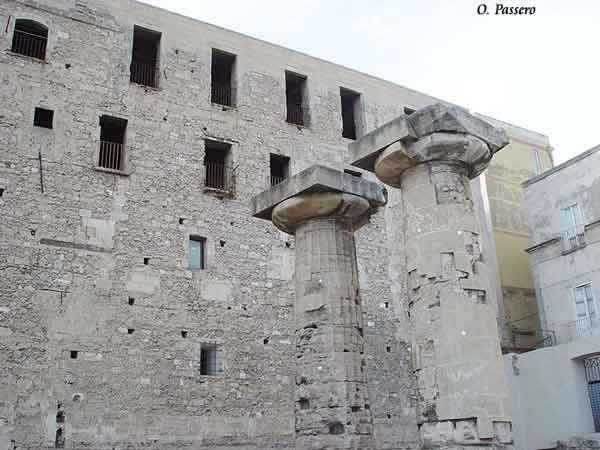
Remains of Doric Temple in Tarentum. Photo: Ortensia Passero , http://www.ccjonicita.it/paginefoto/
Second Punic War
During the Second Punic War, Taranto was conquered by Hannibal 212 BC. He was not able to capture the citadel of the city which was defended by roman troops. Because of Hannibal's failure to capture the citadel, he was not able to use Tarentum as a major port and staging area for the invasion of Italy. The army was forced to portage boats across the city in order to sail from the bay. The city supported his war against Rome, but was later returned to Rome, in 209 BC, ending the Greek period of Taranto.
Roman period
Roman Republic and Empire
In 122 BC a Roman colony was founded next to Taranto, according to the law proposed by Gaius Sempronius Gracchus. The colony was named Neptunia, after the Roman sea god Neptunus, worshipped by the Tarantines. The Roman colony was separate from the Greek city, and populated by Roman colons, but it was later unified to the main centre when Taranto become a municipium, in 89 BC.
In 38 BC Mark Antony, Octavianus and Lepidus signed the Treaty of Tarentum, extending the second triumvirate until 33 BC.
During the late Republic and all the Roman Empire, Taranto was a simple provincial city. Emperor Trajan tried to counter the reduction of the population giving the Tarantine lands to his veterans, but this initiative failed. Taranto followed the story of Italy during the late Empire, with Visigoth attacks and Ostrogoth domination.
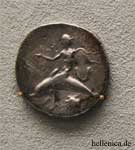
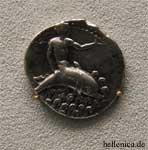
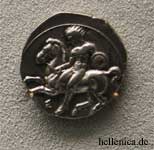
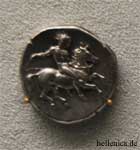
Tarentum, Tarentum, Tarentum, Tarentum,
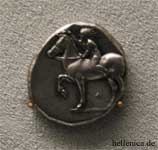
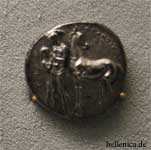
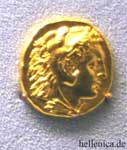
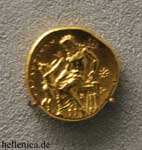
Tarentum, Tarentum, Tarentum, Tarentum,
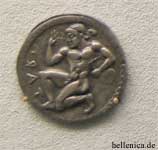
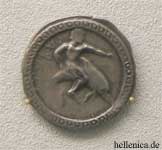
Historical figures
Here is a list of historical figures, who have had a relationship with the city. Not all of them were actually born in Taranto.
Archytas of Tarentum (428 BC - 347 BC), philosopher, mathematician, astronomer, statesman, strategist and commander-in-chief of the army of Taranto;
Philolaus (c. 480 BC – c. 405 BC), mathematician and philosopher.
Aristoxenus, peripatetic philosopher, and writer on music and rhythm;
Leonidas of Tarentum poet;
Livius Andronicus, poet;
Titus Quinctius Flamininus (c. 228 BC - 174 BC), propraetor of Tarentum;
Pacuvius, tragic poet, died in Tarentum in 130 BC;
| Ancient Greece
Science, Technology , Medicine , Warfare, , Biographies , Life , Cities/Places/Maps , Arts , Literature , Philosophy ,Olympics, Mythology , History , Images Medieval Greece / Byzantine Empire Science, Technology, Arts, , Warfare , Literature, Biographies, Icons, History Modern Greece Cities, Islands, Regions, Fauna/Flora ,Biographies , History , Warfare, Science/Technology, Literature, Music , Arts , Film/Actors , Sport , Fashion --- |
Retrieved from "http://en.wikipedia.org/"
All text is available under the terms of the GNU Free Documentation License


